200 Gallons
Orison
Rowan Vinho Regional Alentejano 2014
Dark purplish ruby red. Austere nose with some purple flowers, baking spices, cinnamon and dark bramble berries. Medium tannins (6/10) and medium plus bodied. Layered on the palate with a dark black cherries, savory herbs and some spiciness. Dry long and lingering finish. Drink till 2027.
Made up of 41% Tinta Roriz, 38% Touriga Nacional, and 21% Alicante Bouschet. Aged in French oak for 16 months. Only 200 cases produced. — 6 years ago
Tenuta dell'Ornellaia
Bolgheri Red Bordeaux Blend 1999
Bought this in 2002. Finally popped it open to celebrate the move to Charleston. Great wine, but not as complex as I would have thought, especially for over $200 a bottle. Cheers! — 7 years ago
Roederer Estate
Brut Anderson Valley Sparkling Pinot Noir - Chardonnay Blend
Founded in 1982, Roederer Estate adds oak-aged reserve wines to all their blends to create complex, dry and harmonious sparkling wines. The first Brut California sparkling wine produced by Champagne Louis Roederer, builds upon a 200-year tradition of winemaking. Straw, nice mousse and bubbles for this 60% Chardonnay & 40% Pinot Noir blend. Crisp Apples and creamy mineral tones, nice balance with acidity. Lingering finish ending with oak, lemon and nutty characteristics. Very nice! — 8 years ago
Cameron Hughes
Lot 200 Napa Valley Cabernet Sauvignon 2008
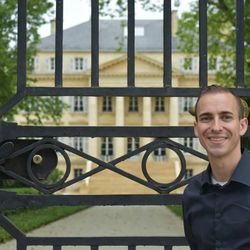
200 Gallons
Reserva Double Cask Alicante Bouschet 2020
Certainly needs to breathe. Smooth with a dry finish. Rich Dark berry/fruit — 4 years ago
Andrew Murray
Tous les Jours Santa Ynez Valley Syrah 2017
Great value! Founder Andrew Murray’s Vineyards is a 200-acre site, about 1,500 feet above Foxen Canyon Rd, inland portion of the Santa Ynez Valley, making the vineyard the highest in the county. A blend of Grenache, Syrah, and Mourvedre, "Tous les Jours" means “every day,” shows dark red with black fruit aromas and complex spice notes. On the palate, blueberry and black cherry with spicy cedar notes and some oak, Soft tannins, long finish. Very nice, did I say great value! — 5 years ago
Pinauga
200 Cepas Tempranillo
Smooth soft and full mouthfeel. Very drinkable 2014 vintage — 7 years ago
Seavey Vineyard
Estate Grown Cabernet Sauvignon 2013
The nose reveals; dark currants, blackberries, heavy black plum, black raspberries, dark cherries and some blueberries. Black tea, expresso roast, anise, crushed dry rocks, big vanilla, clove, a little nutmeg, dry underbrush, sweet tarry notes, leather, woody notes with dark fresh & withering flower bouquet.
The body is big and lush. The tannins are big, meaty and tarry. Very dark currants. Blackberries, heavy black plum, black raspberries, dark cherries and some blueberries & strawberries as they open up. Black tea, expresso roast, steeped fruit tea, anise, crushed dry rocks, dry clay, big graphite, big vanilla, dark spice, clove, light dry herbs, a little nutmeg, dry underbrush, sweet tarry notes, leather, cedar with violets dark fresh & withering flower bouquet. The acidity is round, fresh and beautiful. The big, long, well balanced finish is excellent and look forward to having this in 15-20 years. This one will be a stunner!
Photos of, the barn where they make wine and hosts tastings, our private tasting area inside William’s old office. William desk and their outside terrace area.
Producer history & notes...Seavey Vineyard is located along Conn Valley Road in the eastern hills of Napa Valley, about 15 minutes from the valley floor.
This historical property was originally a cattle ranch. However, records indicate grapes were planted on some of the hillsides as early as the 1870’s. The stone dairy barn, still in existence, was built in 1881.
William & Mary Seavey purchased this property in 1979. The estate was originally founded by the Franco-Swiss Farming Company in 1881 which, closed down when Phylloxera destroyed their grape vines and the Volstead Act (Prohibition) went into effect. At the time of their purchase, they were a horse and cattle ranch. They quickly planted the slopes with grapes and initially sold their fruit to Raymond Vineyards. They have never purchased grapes, all their wine is made from estate grapes. Their vineyards are separated into 20 plus individual blocks.
Today, the property is about 200 total acres of which, 40 acres are planted to vine. Their hillside vineyards produce low yields of rich concentrated fruit. A small block of Chardonnay grows in a cooler lower part of their property. Besides grapes, they also raise cattle which are used to graze the hillsides. They feed the vineyard with the cattle cuttings. In 2003, they were one of the first Napa wineries to install solar.
Mary passed away in 2008 and William died in 2016. There daughter Dorie returned to the family business and now oversees the winery operations. Her brother Arthur also handles national and some small international sales, primarily to restaurants. However, most of their wine is sold direct to consumers.
Seavey’s first commercial vintage was released in 1990 a year after they renovated the stone dairy barn into a working winery. Today this stone building is the centerpiece of the property and is where tastings are hosted.
Since 2011, Jim Duane has been their day to day Winemaker. He’s worked at Robert Mondavi and Stag’s Leap Wine Cellars. It should also be noted that Philippe Melka Winemaker/Consultant has been with Seavey since 1995...one of Philippe’s two initial wine making jobs in the Napa Valley were with Seavey and Lail Vineyards.
Seavy makes about 3,200 cases annually depending on what mother nature brings. They make around two hundred cases of Chardonnay, slightly more Merlot and the rest is of the production is comprised of their Caravina and Estate Cabernets.
— 7 years ago
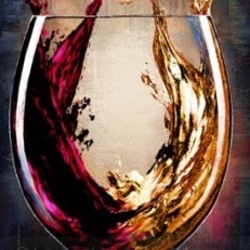

Joseph Phelps Vineyards
Insignia Estate Grown Napa Valley Cabernet Sauvignon Blend 2012
Not worth $200 — 8 years ago
Heitz Cellar
Bella Oaks Vineyard Cabernet Sauvignon 2006
One of our last Heitz Bella Oaks bottling’s.
Heitz no longer leases the vineyard. The fruit from the Bella Oaks Vineyard is now bottled by Quintessa at $200 a bottle when Heitz sold it at around $70 or less when they leased the terroir.
The better pair with the end cut of the Prime Rib with creamy, horse radish.
Floral, candied, spice driven fruit of; dark currants, blackberries, black raspberries, black plums with tough skins, plums, dark cherries and deep, juicy strawberries. Dark tarriness, steeped black tea, incense, burnt amber, clove, nutmeg, vanilla, dark chocolate bar, mocha powder, moist clay, dry, crushed rocks, dry, twig, eucalyptus, sage, bay leaf, dry top soil, tobacco, leather, cedar, grainy limestone with dark, red, purple, candied withering florals that dark & candied. The acidity is perfect. The structure, tension, balance and length still need 6–10 years. The finish is; rich, beauty, elegant that starts, fresh, juicy falling on to earth & spice that persist until you have something bigger.
Plated with very cheesy Au Gratins & caramelized carrots.
Still an adolescent with 15-20 years of good sipping ahead of it.
The most flavorful piece of beef I’ve ever had. Had more tender Wagyu Ribcaps, just not this much flavor.
Happy New Year! 🥳🎉🍷🎊
12.31.2020 — 5 years ago
Torbreck Vintners
RunRig Barossa Valley Shiraz Viognier 2016
Another Torbreck brought to the Toowoomba Wine Show Judges Dinner at the Downs Club by winemaker Greg McGill. Earthy perfume - a solid full bodied palate 15% ABV. Given 100 points by Joe Czerwinski of Wine Advocate. Never seen the value in Run Rig for the plus $200 price tag. A certain mystique here and one of the Barossa icons but don’t get the hype to be honest. — 6 years ago
Woodward Canyon
Special Selection Cabernet Sauvignon Blend 2005
2005 Woodward Canyon Special Selection
Wow, what a wine. A wine they make twice a decade in the most special vintages. A blend of cab, petit verdot and merlot that sees 200% new american oak. This means they put the wine in a new oak barrel and leave it for a year or so and than they rack it into a second new oak barrel for another year or so. It is a huge and decadent wine. It makes no apologies. Will you find unique terroir and sense of place? Hell no. But you will be giving your taste buds an amazing treat. Like firing a fully automatic 50 caliber machine gun. Its downright wrong to like it but it is still super fun and something you will never forget. Yes, that is how much I like this wine.
13 years old and not a dip in sight. Just entering its optimum drinking window now. I will drink this over the next 7 years and I will love every sip. — 7 years ago
Château Brane-Cantenac
Grand Cru Classé en 1855 Margaux Red Bordeaux Blend 2005
I have a six-pack of this 05. I thought after 10 years in bottle, it would be interesting to check in on its evolution. While tasty, I’ll wait another 8-10 to open another. Even after 2-3 hours in the decanter, it’s still a very young adolescent. On the nose, slightly sour blackberries & dark cherries, dark currants, baked black plum, haunting blue fruits, anise, whiff of spice, steeped tea, dry stones, dry crushed rocks with dry top soil, caramel, vanilla with fresh & dry red florals. The body is thick & full. Tannins are starting to round out. It’s velvety on the palate. The fruits are; bright, fresh & ripe and really show the greatness of the 05 vintage. Dark currants, blackberries, dark cherries, baked black plum, haunting blue fruits, baked strawberries, cherries, raspberries on the long set, dark spice, clay & loamy dry top soil with crushed rocks, dry stones, cigar with ash, graphite, dry stems, slight herbaceous character, mint, used leather, clove, caramel, vanilla, fresh & dry red florals with violets. The round acidity is about perfect. The structure and length are still strong. The balance is in harmony. As for the long finish, it’s lush, ruby, rich and well polished. Photos of; Chateau Brane Cantenac, large wood vats, Henri Lurton and Estate vines. Producer notes and history...Chateau Brane Cantenac began in the early 17th century. At the time, the estate was known as Domaine Guilhem Hosten. Even that far back, wine was produced from the property. In fact, the wine was so highly regarded it was one of the more expensive wines in Bordeaux. It sold for almost as much money as Brane Mouton. This is interesting because of who went on to buy the vineyard in the 1800’s. The Baron of Brane, also known as “Napoleon of the Vineyards”, purchased the Chateau in 1833. At the time of the sale, the estate was called Chateau Gorce-Guy. To get the funds needed to purchase the Margaux vineyard, the Baron sold what is now called Mouton Rothschild, which was at the time of the sale, known as Chateau Brane-Mouton. Not such a good move with hundreds of years in hindsight! In 1838, the Baron renamed property taking his name and the name of the sector where the vineyards were located and called it Chateau Brane Cantenac. The Chateau later passed to the Roy family, who were well-known in the Margaux appellation in those days, as they owned Chateau d’issan. Moving ahead to 1920, the Societe des Grands Crus de France, a group of merchants and growers that owned several chateaux located in the Medoc including; Chateau Margaux, Chateau Giscours, and Chateau Lagrange in St. Julien, purchased Chateau Brane Cantenac. Five years later, M. Recapet and his son-in-law, François Lurton, took over Brane Cantenac along with Chateau Margaux. Lucien Lurton (the son of François Lurton) inherited Brane Cantenac in 1956. Today, the estate is still in the hands of the Lurton family. Brane Cantenac is owned and run by Henri Lurton. After being given the responsibility of managing Brane Cantenac, it was under the direction of Henri Lurton that large portions of the vineyard were replanted. Vine densities were increased, the drainage systems were improved and the plantings were also, slowly changed. The vineyard of Brane Cantenac is planted to 55% Cabernet Sauvignon, 40% Merlot, 4.5% Cabernet Franc and .5% Carmenere. Carmenere was used for the first time in the 2011 vintage. The only other Chateau I know that still uses Carmenere is Clerc Milon. The 75 hectare Left Bank vineyard of Brane Cantenac is essentially unchanged since it earned Second Growth status in the 1855 Classification. At least that is the case with the 45 hectares used to produce the Grand Vin of Brane Cantenac. Those 45 hectares are planted surrounding the Chateau. Those vines are located just in front of the Cantenac plateau and are the best terroir that Brane Cantenac owns. They have other parcels, which are further inland and much of those grapes are placed into their second wine, Le Baron de Brane. Those additional hectares can be divided into 3 main sections. Behind the Chateau, they have 15 hectares of vines on gravel and sand, 10 hectares across the road with sand, gravel and iron and a 13 hectare parcel with gravel called Notton, which is used for their second wine. The vineyard is planted to a vine density that ranges from 6,666 vines per hectare on the plateau and up to 8,000 vines per hectare for the vines located behind chateau, in their sandier soils. The higher levels of vine density are always found in the newer plantings. The terroir of Brane Cantenac consists of deep gravel, sand and clay soil. Experiments in the vineyards are currently looking at becoming more organic in their vineyard management. Today, more than 25% of Brane Cantenac is farmed using organic farming techniques. It is expected that over time, the amount of hectares farmed with organic methods will be increased. Brane Cantenac has gone through 2 relatively recent modernization’s in 1999, when they added began adding the first of their smaller vats to allow for parcel by parcel vinification and then again in 2015 when they completed a much more complete renovation of their cellars and vat rooms. While Brane Cantenac is a traditional producer, they are no stranger to technology as they were one of the first estates to embrace optical grape sorting machines. In very wet vintages, they can also use reverse osmosis. To produce the wine of Chateau Brane Cantenac, the wine is vinified in a combination of temperature controlled, traditional, 22 oak vats, 18 concrete tanks and 20 stainless steel vats that vary in size from 40 hectoliters all the way up to 200 hectoliters, which allows for parcel by parcel vinification. 40% of the fermentation takes place in the oak vats. The oldest vines are vinified in vats that are selected to allow for separate parcel by parcel vinification. The younger vines are vinified more often together in the same vats. However, the Carmenere is entirely micro-vinified, meaning that those grapes were completely vinified in barrel, using micro-vinification techniques. This can also happen because the amount of grapes produced is so small. Some vats can be co-inoculated, meaning they go through alcoholic fermentation and malolactic fermentation simultaneously. At Chateau Brane Cantenac, malolactic fermentation takes place in a combination of French oak tanks and barrels. The wine of Brane Cantenac is aged in an average of 60% new, French oak barrels for 18 months before bottling. The initial 2 months of aging is done with the wine on its lees, which adds more depth to the wine. There second wine is Le Baron de Brane. Le Baron de Brane is not new. In fact, previously, the second wine went under the name of Chateau Notton, which took its name from one of the main parcels where the grapes were planted. During the late 1950’s and into the 1960’s, having a second wine was important as the estate declassified 3 vintages, due to extremely poor, weather conditions in 1956, 1960 and 1963. Production of Chateau Brane Cantenac is about 11,000 cases per year. — 8 years ago


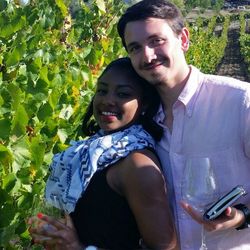


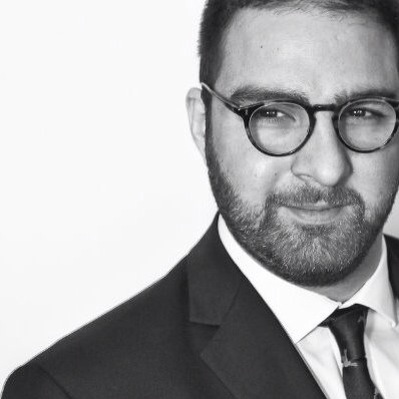




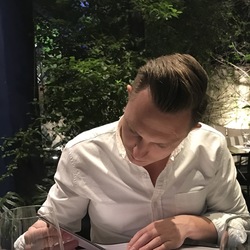



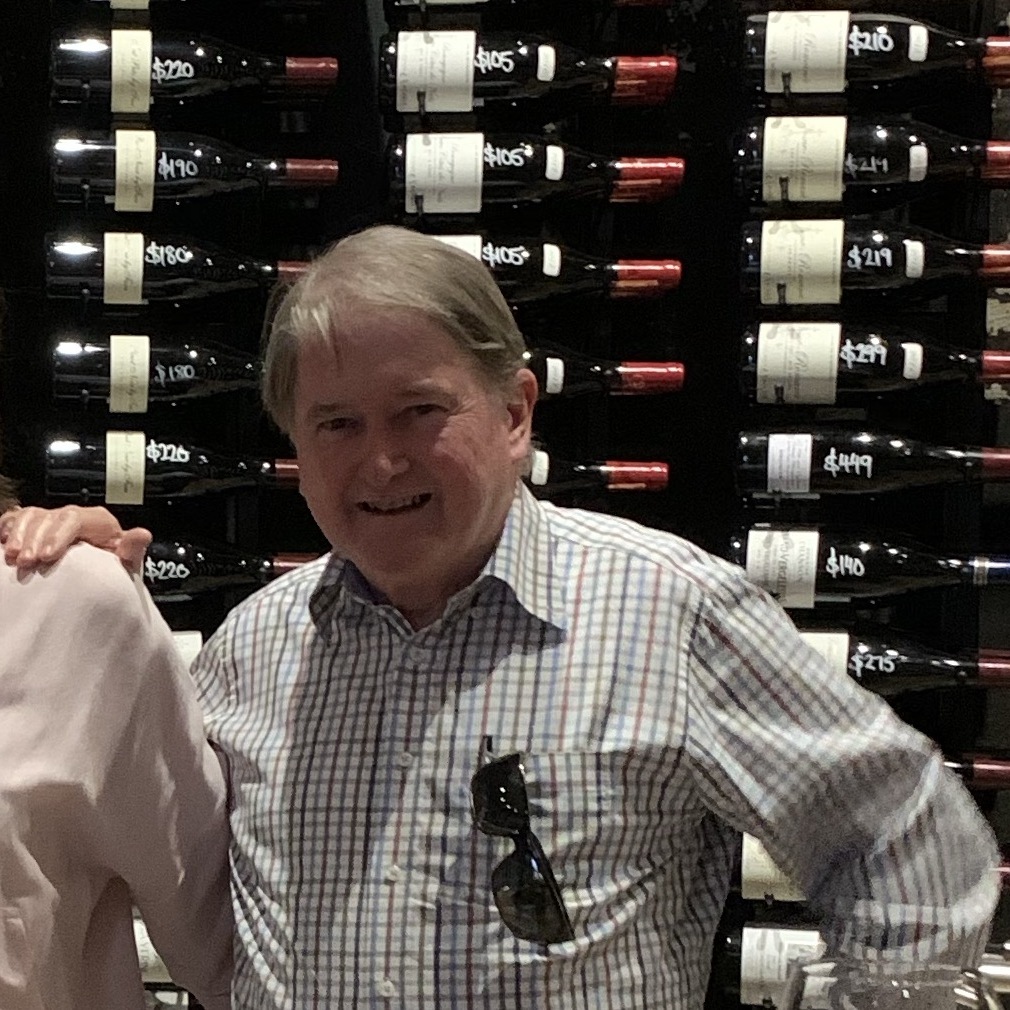

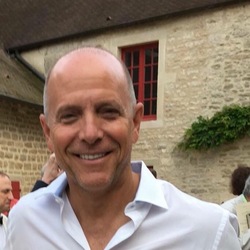
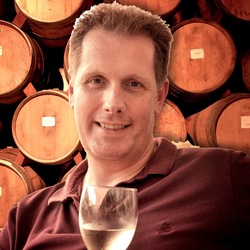
M F
Nice Provence rose.
From the label:
COTES DE PROVENCE ROSE
Owned by the Quiot family from Châteauneuf-du-Pape, the 200 acre estate lies at the foot of Mont Sainte Victoire near Aix-en-Provence. Its winemaking facilities have been completely renewed over the past 3 years.
This is a blend of Grenache, Syrah, Cinsault, Cabernet Sauvignon, Mourvèdre.
Special efforts are made to preserve freshness and fruit by the use of CO2 gas to exclude oxygen during the harvest. This is a fresh rosé with a pretty salmon-pink color, elegant flavors of red berries, mineral notes and a clean finish. Serve this wine lightly chilled. Very nice on its own, it goes well with most dishes, specially sushi, salads, pizza and mild cheeses. — 3 years ago